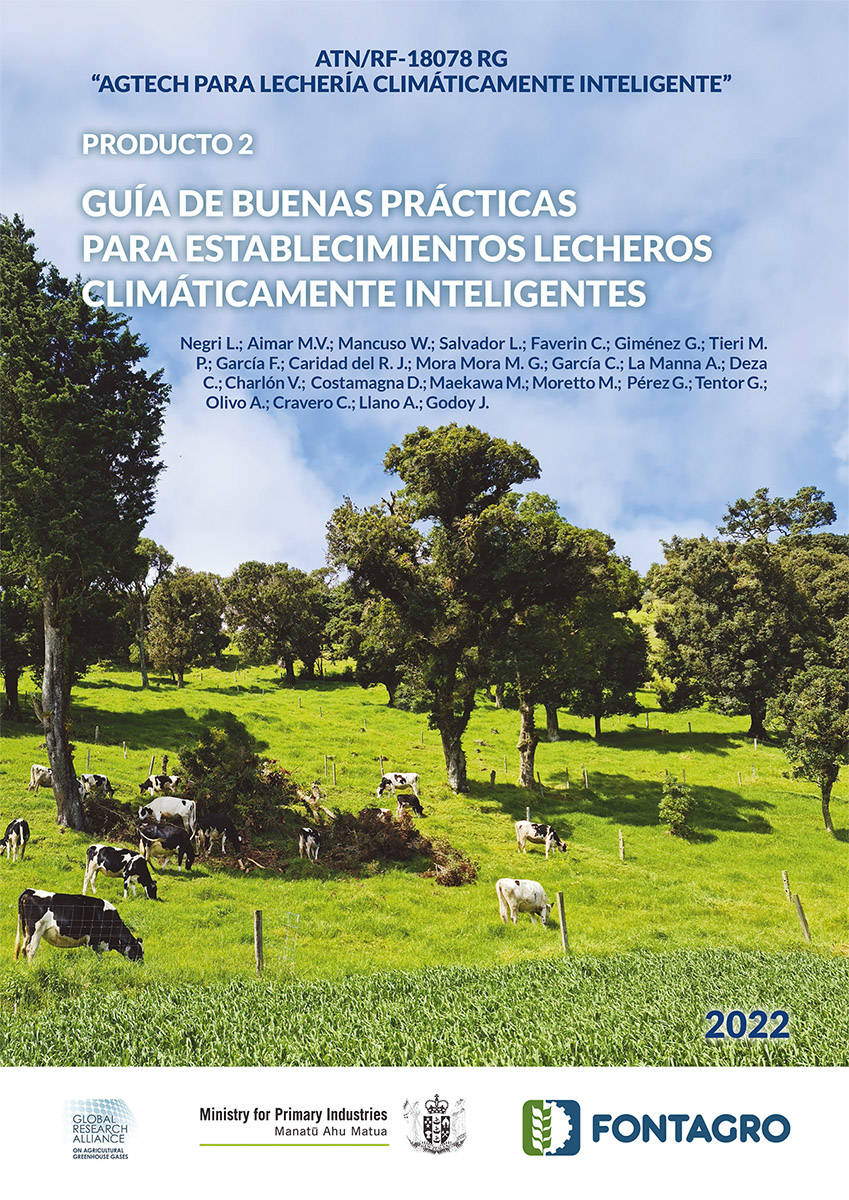Within the framework of the “Agtech for Climate-Smart Dairy” project, the GOOD PRACTICES GUIDE FOR CLIMATE-SMART DAIRY FARMING has been launched.

This four-year project has been running since 2020 and its goal is to build up new capacities for the dairy production sector in Latin America and the Caribbean. It seeks to implement sustainable management processes aimed at achieving climate-smart dairy farms. It is a FONTAGRO project financed by the Ministry for Primary Industries of New Zealand with the support of the Global Research Alliance. The Project is led by INTA Argentina, and it is co-executed and implemented at IICA (National Institute of Innovation and Transfer in Agricultural Technology) Costa Rica; Argentina (Agricultural Sciences School, Córdoba National University); Honduras (Honduran Milk Chamber, CAHLE); Dominican Republic (Dominican Institute of Agricultural and Forestry Research, IDIAF) and Uruguay (National Institute of Agricultural Research, INIA).
This document is based on the Good Practices Guide for Dairy Establishments (Negri et al., 2019), incorporates international regulations (CODEX, 2004; FAO, 2012; OIE, 2019), and some other information from documents listed in the Bibliography.
The publication´s goal is to provide a guide for dairy farmers in Latin America and the Caribbean (LAC) on recommended practices for milk production on any farm regardless of scale, technology, and location. It is based on the Climate Smart Dairy Farming goals: increase productivity and income and adapt to and/or mitigate climate change (CC). The Best Practices (BP) were categorized and grouped according to their potential impact on farm production (P), milk quality (MQ), adaptation (A) to CC, CC mitigation (M), and balance (B) -the difference between Greenhouse Gases emissions and carbon sequestration. A total of 12 of these practices were considered the most relevant to achieving climate-smart dairy farms, given their impact on P, A, and M and their unique contribution to B.
The adoption of practices recommended here is voluntary since this guide has no legal bearing, does not replace either national (e.g., technical standards or regulations) or international requirements, and does not exempt compliance with any current legislation.
This document involves all the processes and aspects of primary production carried out in dairy establishments, including milk storage and conservation, from milking to the farm gate. The guide does not cover milk transport or processing activities, even if the last ones are carried out in the same dairy establishment.




